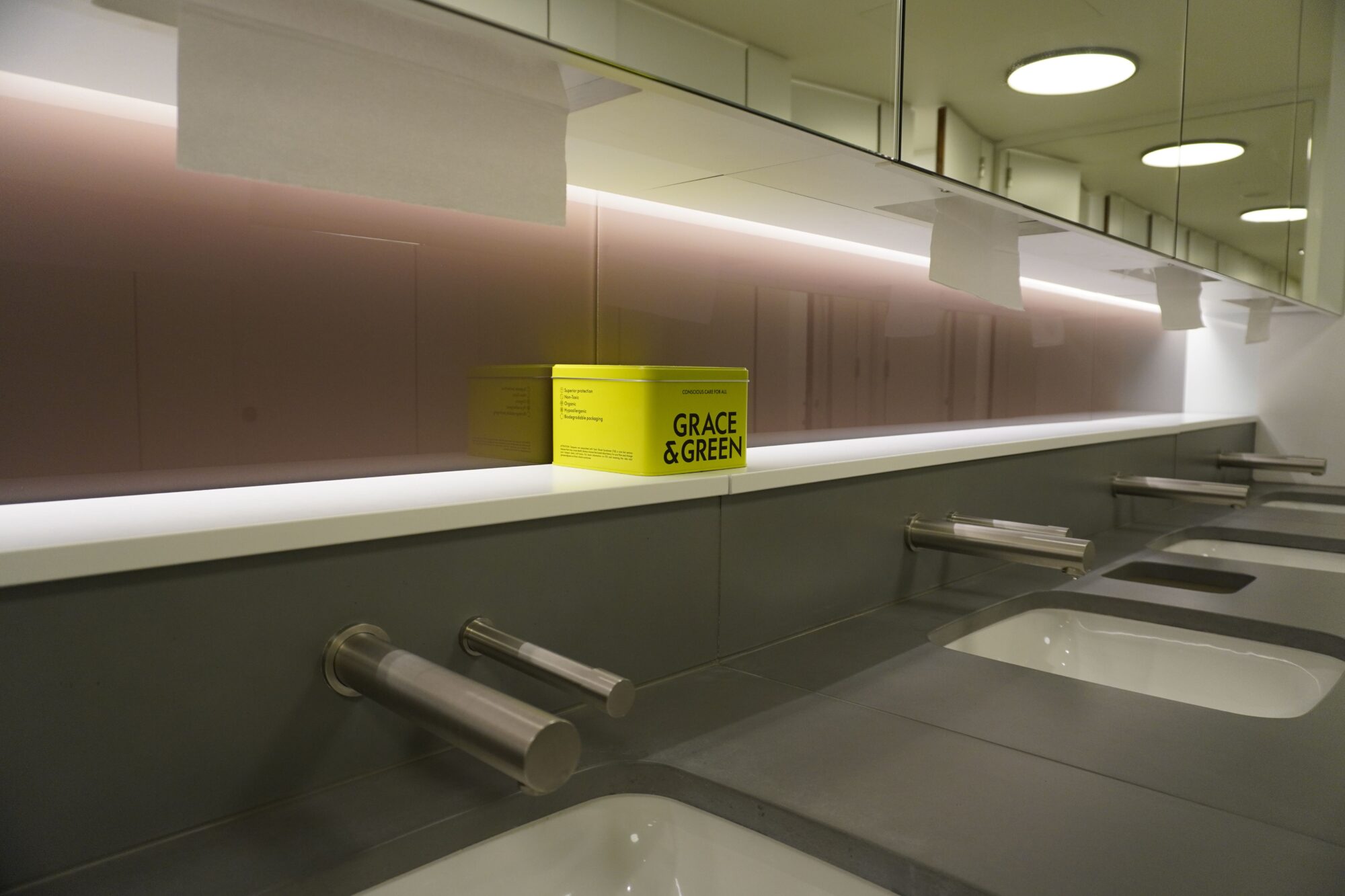Washrooms are essential in many buildings, retail stores, heritage landmarks and office environments. These facilities need to be sanitised and stocked frequently for optimal facility use and experience.
In this blog, we will be exploring why it is essential for offices to integrate washroom cleaning into their professional cleaning schedules.
The Importance of Washroom Cleaning
Washrooms can be a breeding ground for bacteria due to moisture in the air and frequent contact with high-touch surfaces. It is crucial to minimise bacteria spread through cleaning techniques and optimising ventilation.
Health and Safety
The top priority for cleaning solutions is health and safety. Health and safety matters for facility users, as well as cleaning operatives. If bathroom facilities are not regularly sanitised, it can cause risk of bacterial transfer.
Cross-contamination of bacteria can cause serious health issues. Research by the Journal of Family Medicine and Primary Care found that out of 6,678 samples, 29% of samples were contaminated with E. coli. Adhering to a frequent cleaning schedule ensures a hygienic and safe environment, ultimately improving facility user health and well-being.
Implementing these cleaning schedules also ensures your building’s facilities remain in line with the Health and Safety at Work Act 1974. This act monitors whether a site is hygienic and clean enough for employees, visitors and facility users.
Facility Consumables
Bathroom cleaning services are 50% cleaning and sanitisation, and 50% consumable usage. Consumables are integral to maintaining hygiene levels, ensuring visitors take accountability of their own hygiene practices.
Research by Citron Hygiene found that 5% of facility users wash their hands for more than 15 seconds, suggesting that an astonishing 95% wash their hands for less. Re-stocking consumables during commercial cleaning services will ensure visitor satisfaction is maintained, whilst reducing unsanitary practices.
Influencing Schedule Factors
In washrooms specifically, there are various factors which can affect hygiene levels.
Air Moisture and Ventilation
The moisture from warm water showers and sinks can create a humid environment where microorganisms thrive. If your washroom is affected by a humid atmosphere, installing better ventilation systems will help draw unwanted moisture.
Dehumidifiers and automatic ventilation systems can improve bathroom air quality, reduce mould growth, limit bacterial spread, and maintain a fresh, pleasant environment.
Changes in Footfall
Office footfall can vary with seasonal holidays, work-from-home allowance and overall company headcount. Higher volumes in footfall will result in higher chances of bad bacteria growth and depletion of washroom consumables.
Cleaning schedules need to be matched to facility footfall. Higher volumes of traffic need more regular cleaning services, whereas lower volumes of traffic can survive with less frequent schedules. It is important to note that no matter the frequency, all cleaning should meet a consistent high standard.
Seasonal Changes
Often, colder months can create a higher risk of the spread of illness. There are many types of bacteria and viruses that can be found in bathrooms, such as:
- The common cold
- Hepatitis A
- coli
- Shigella
- Streptococcus
- Staphylococcus
Latest research by NHS England found that the weekly average of flu has increased from 1.9% to 3.3%. In times where illness numbers are high, a higher frequency of cleaning and sanitation is crucial for keeping office headcount high.
Washroom Cleaning Techniques
Each washroom component requires different techniques and products for effective sanitisation. Each fixture and element must be cleaned thoroughly to maintain high health and safety standards.
Toilets
Toilets, like other elements, are one of the most used fixtures in washrooms. These must be disinfected multiple times a day, no part of the toilet should be overlooked during sanitisation.
The materials used to clean the toilets must not be used for any other fixture or material in the bathrooms. This technique will limit the risk of bacteria transfer to any other elements.
Sinks
Being used to remove bacteria from users’ hands, sinks and taps accumulate soap scum, bacteria and other debris over time. Fingerprints, water marks and smudges should be cleaned as soon as they become visible.
Sinks and taps must be cleaned using non-abrasive cleaning solutions, as their materials can be delicate and prone to scratching.
Washroom Floors
Floors will collect bacteria from visitors tracking in dirt from their shoes. Regular mopping with disinfectant is essential for safety and hygiene. After floor cleaning services are completed, appropriate signage must be displayed to reduce the risk of slips, trips and falls.
Consumable Dispensers and High Touch Points
Consumable dispensers are used by every facility user. Given the frequent use of these fixtures, these should be disinfected multiple times throughout the day. Multiple disinfections will ensure a reduction in the spread of illness to users.
Consumables and other high touch points can include:
| Consumable Dispensers | High Touch Point Fixtures |
| Soap Dispensers | Light Switches |
| Paper Towel/Toilet Rol Dispensers | Door Handles/Locks |
| Fragrance Sprays | Hand Dryers |
| Period Care Dispensers | Flush Buttons/Handles |
Waste Management
Waste such as sanitary waste, used paper towels and general waste needs to be removed regularly to avoid bacteria build-up and bad odours. Bad smells and bacteria build-up will negatively affects users’ perception of cleanliness. Partnering with companies such as Simply Washrooms can ensure that waste is removed, recycled or disposed of safely.
Get In Touch
If you’re looking to improve your office washroom hygiene, partnering with a professional cleaning company can make all the difference.
We offer tailored commercial washroom cleaning services that ensures your facilities remain spotless, safe, and welcoming throughout the day.
Contact our expert team today to learn about our commercial cleaning solutions.
